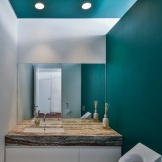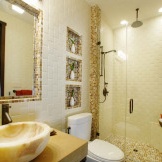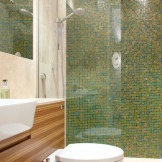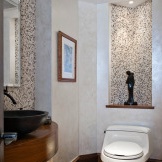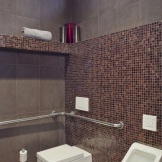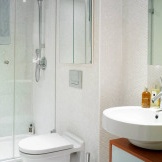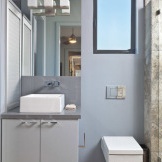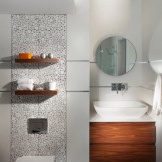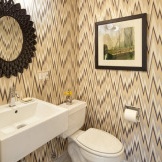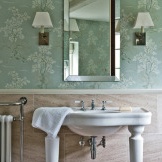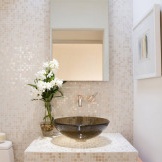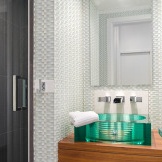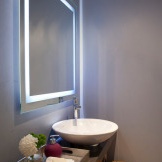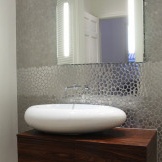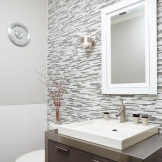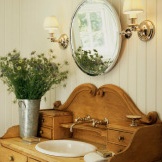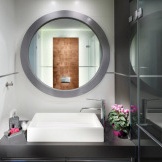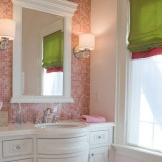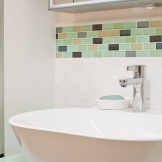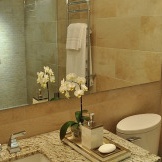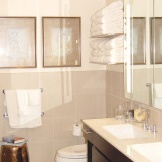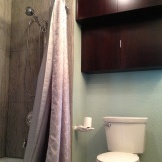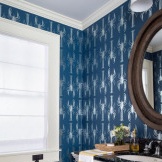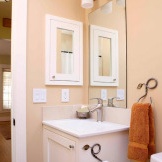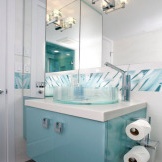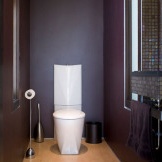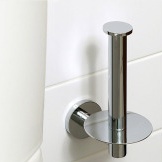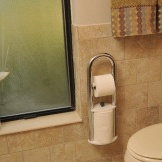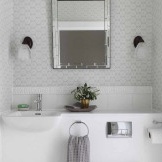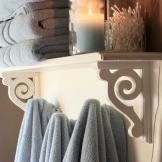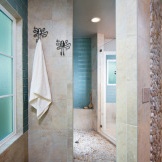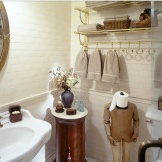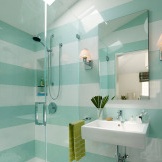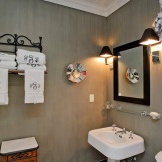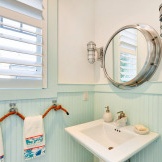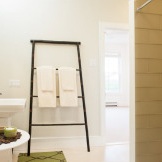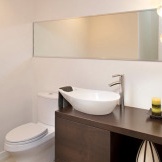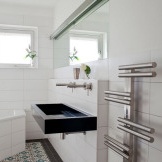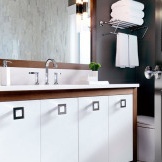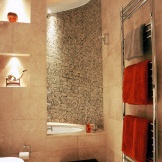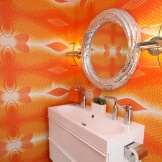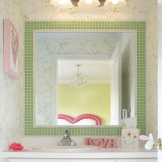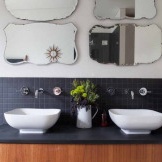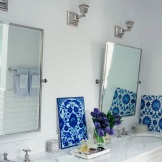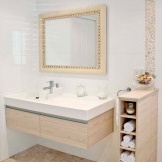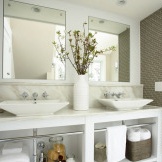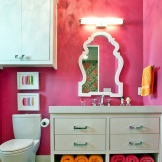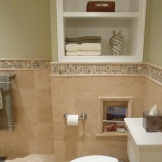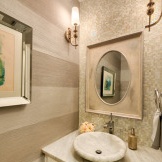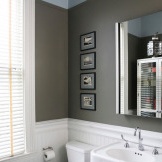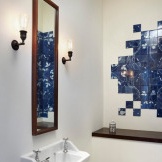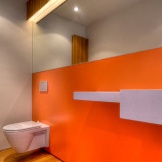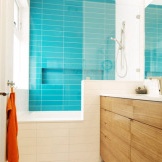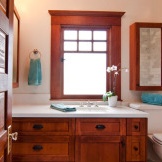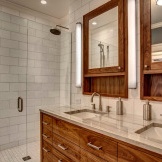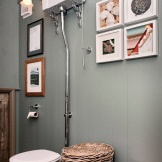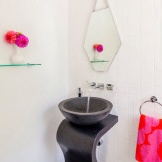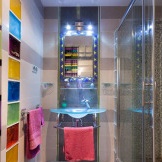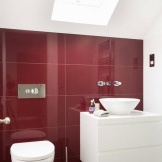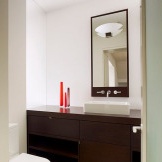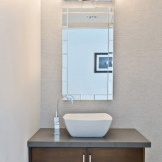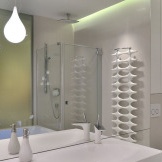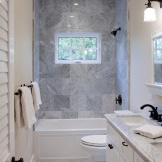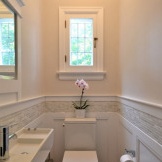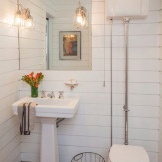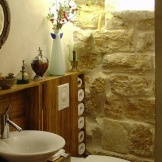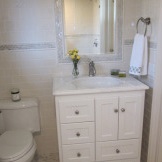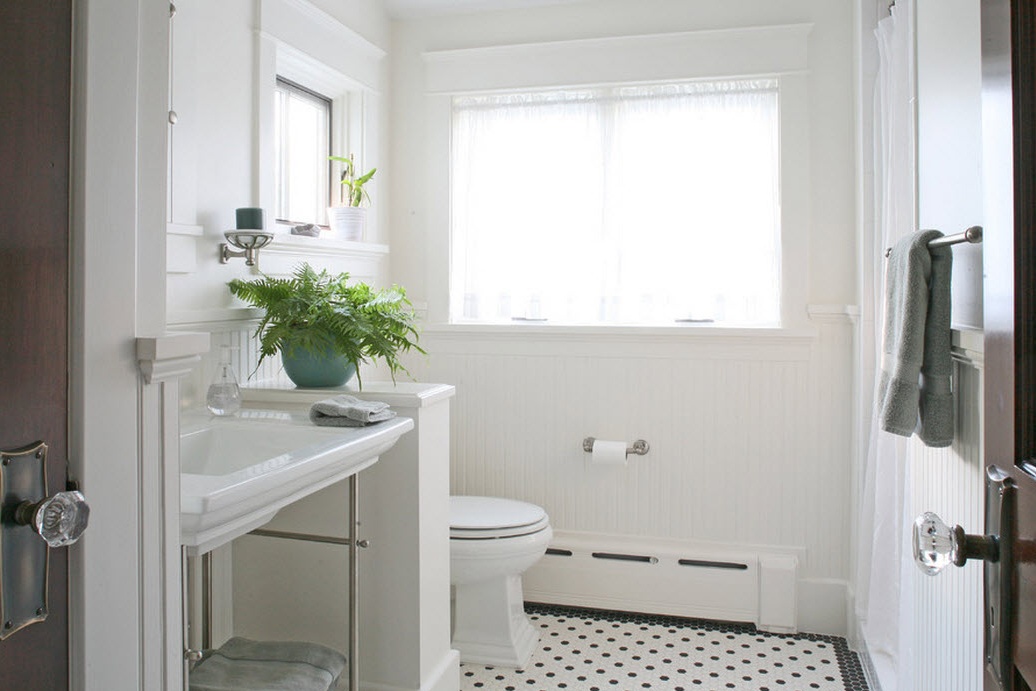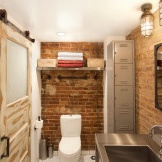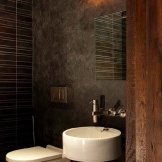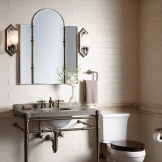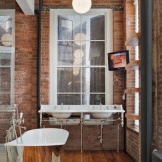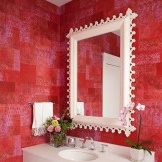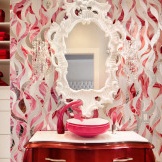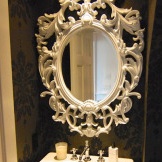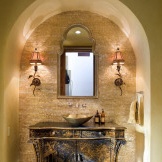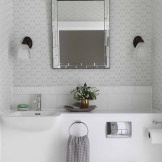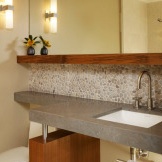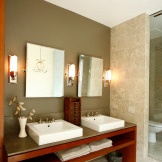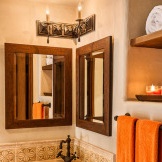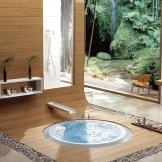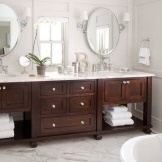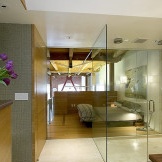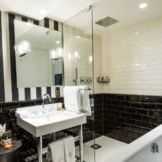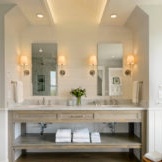Bathroom design: the main laws and important details
The design of the bathroom, regardless of style, obeys the basic requirements: functionality and a minimum of decorative elements. The classic bathroom provides for the mandatory presence of two items - a toilet and a washbasin, although options with a shower, bathtub and bidet are also common. The space of the bathroom should be as free as possible, without hard-to-reach places and small decorative details.
The most important
Toilet
The central subject of the bathroom is the toilet. According to the installation option, they are floor and hanging. Floor toilets are more familiar and traditional. Mounting such a toilet is simple, but takes up more space compared to a hanging one.
If the bathroom is small, then the hanging model will be more appropriate. You can also save space by installing a floor toilet with a tank, which is mounted separately on the wall or mounted behind a false wall.
The materials from which most toilets are made are faience and porcelain. Earthenware is cheaper, has a lifespan of about 10 years, and after a while may lose its appearance. Porcelain is a more expensive and high-quality material, the guaranteed life of which is more than 30 years. It will retain its original appearance for a long time. Externally, toilets from faience and porcelain are almost indistinguishable, since all products are covered with white or colored glaze.
Exclusive designer toilet bowls are made of glass, metal, natural stone (travertine, marble, granite, onyx).
Washbasin
Another important detail of the bathroom is the washbasin. Today there are several basic solutions:
1) Wall-mounted (console) washbasin is the most common and compact version. Tulip is a popular type of cantilever washbasin, when the bowl is mounted on a pedestal, which serves as an additional support and hides the water supply and drainage system. In a very small bathroom, you can use the corner hanging washbasin.
2) Overhead washbasin - a bowl, which is installed on top of a cabinet or countertop.
3) Mortise washbasin - a bowl that is mounted in a cabinet or tabletop and usually does not rise more than 1-3 cm above its surface.
About color and light
Very often a bathroom is a small room with no windows. In this case, special attention should be paid to lighting. One or two lamps for the bathroom will be enough. A winning option is the spotlight on the washbasin and the mirror above it.
The choice of colors depends entirely on the taste of the owners of the house. But still it is not recommended to make the bathroom completely black or white. Black and dark saturated colors close to it (dark brown, dark blue) will have a depressing effect. White will always be associated with a medical institution.
Recognized leaders in the design of the bathroom and the bath are light pastel colors: pale blue, light green, shades of pink, yellow and ivory.
Functional Details
In the bathroom should be a minimum of items. And here are the main little things that you can’t do without (in order of importance):
1) The holder for toilet paper is a small but very significant detail in the bathroom, which must fit organically into the interior of the room. You can choose a simple open metal holder, half-closed (with a rising stop valve) or closed. Original holders made of wood, in the form of funny figures that “feed” paper, rope ropes, elegant curved shapes can make a frivolous touch in the design of the bathroom.
2) Brush. It would seem a simple thing, but the designers tried not to spoil the interior of the bathroom, but could even become its decoration.There are many models of brushes - on stylish metal coasters, wall-mounted, with glass, plastic and metal bowls that completely hide the working part of the brush from the eyes.
3) Hooks or towel holders. Metal, wooden, glass or plastic - they can also be an important element in the design of the bathroom.
4) Towel dryer. This useful element is not necessarily a dull “ladder” or “snake”. Why not diversify the interior with a heated towel rail in the form of a flower, a broken or fancifully curved line, a Chinese character? In the interior of a classic or palace style, you can apply a stylized model of bronze.
5) Mirror. In addition to its direct purpose, the mirror in the bathroom performs two more important functions:
- reflects light;
- visually expands the space, which is often necessary in small bathrooms.
6) Shelves, cabinets, niches. The pursuit of minimalism is not endless. Anyway, in the bathroom there will be things that need to be stored somewhere. Soaps, cleaning and disinfectants for the toilet, chemicals for the toilet, toilet paper and much more are conveniently stored in a closed niche or cabinet under the washbasin. On open shelves or in open niches there may be several spare towels, soap, some decorative items that are appropriate in the bathroom - for example, a beautiful sea shell.
Design features of the bathroom in different styles
Classic
The classical style prefers restrained light colors: ivory, beige, light brown, pastel shades of green and blue. Metal parts - taps, handles can be made of bronze or have gilding.
In the decoration of walls and floors - tiles, often without a pattern, one or two harmonizing colors (usually cream-white and some more saturated color). When decorating the walls with panels, wood is used, covered with dark varnish. The mosaic looks advantageous in the classic interior.
The mirror is enclosed in a frame. Lighting can be arranged using a chandelier, sconces and recessed fixtures.
Modern
Art Nouveau style requires bold decisions. Colors dominate restrained, but saturated: gray, burgundy, blue, green. Separate bright details are possible, the game is in contrast: blue tiles on the walls and a mirror in a golden frame. The original solution for Art Nouveau is the color illumination of individual zones. Simple straight lines prevail (you can play on this by choosing, for example, a wash basin with a rectangular bowl).
Country
Country style is simplicity and natural materials. If a mirror hangs on the wall, then it is obligatory in a frame of light, unpainted wood. There is also a shower curtain on the hooks, a wicker waste basket and much more. The walls can be decorated with stone or tile, wooden wall panels can be painted to match the tiles or leave the natural color of the tree.
When choosing plumbing, the main thing is not to go too far with modernity. Best of all, classic, simple models will fit into the country style: a toilet with a tank on the wall and a console or mortise washbasin on a wooden pedestal.
Glamor
In the glamor style, you can indulge yourself with exquisite details: a laid-on glass washbasin on an artificial stone countertop, a mirror in an expensive, even a little too eye-catching frame. All these things are important.
Color solutions can be any. Do not be afraid of bright colors. Let the tiles on the walls be lilac, pink, blue, and let the floor be with a three-dimensional effect.
Minimalism and hi-tech
Minimalism and hi-tech profess simplicity, purity of color and lines. Light shades of gray, beige, light blue and green are typical colors of these styles. If something can be hidden or embedded, then so be it: metal and glass are the two main accents. Closed niches, a built-in drain tank, touch taps - all these things create a technological atmosphere that is typical for the style of minimalism and high-tech.
Scandinavian style
Scandinavian style - pure in color and easy to finish.The brickwork of the wall can remain just brickwork, only painted white. It is white - the dominant color in the Scandinavian style. It can be diluted with natural wood panels, gray stone floors, light-colored wall tiles.
The wood remains in its original form. The washbasin bowl can be mounted on the most common rough wooden table. Plumbing is classic, without unnecessary decorative elements and decorations.
Loft
A loft-style bathroom will have something in common with minimalism. The basic principle is to leave the natural textured details intact and build a kind of interior around them. Most often, in the loft style, walls play such a role: bare brickwork, concrete panels and other seemingly uncomfortable things, but competently beaten, they get a completely different sound. In the absence of such elements in the original room, they have to be brought in there.
In the loft style, plumbing can be used on almost anything other than sophisticated and artsy. Let the mirror and wash basin be a simple rectangular shape. Lighting can be arranged with one large lamp or made into spotlights. In general, one should not be afraid that the design will seem somewhat oppressive, because a loft almost always implies a “lived-in non-residential”.
Art Deco
Art Deco style loves the details. On the walls can be painted, expensive tiles with a contrasting pattern. The most unusual and sophisticated plumbing that you can imagine will look appropriate in such a bathroom. Lighting may be provided by a ceiling chandelier or sconce.
In the art deco style, it is customary to play with black. It can be only details (mirror frame and part of the tile on the floor or wall) or key elements (toilet, washbasin, lamps). Other contrasting colors are also appropriate - white, dark brown, gold, purple.
Provence
Provence style - romantic, artsy and simple at the same time. Here you can combine elements of country and classic style. Dominant colors are white, beige, pale blue and lilac. A round mortise washbasin and a cabinet with drapery made of natural fabric, as well as a classic toilet with a tank on the wall, will look great in Provence style. A round or oval mirror can be decorated with a simple frame in light color. If there is a window in the bathroom, a curtain must hang on it, which can be decorated with pickups or tape.


